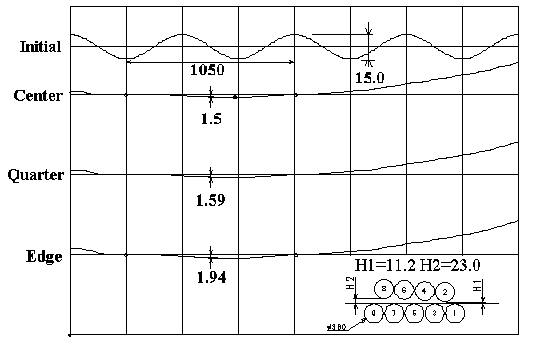

Finite element analyses of rolling processes have been carried out for many years.
Most of the simulations focus on deformation of metal plates/sheets without
taking into consideration flexibility of rolls and the machine frame.
In this case, we present a unique approach to simulation of rolling of
thick plates where compliance of rolls and the complete structure of a
roll leveler is taken into account.
This approach makes it possible to accurately predict shape distortion
of steel plates and gives valuable, practical information on how to prevent
shape defects in a rolled product.
In addition, roll leveling of steel plates after continuous casting, is analyzed.
This approach is universal and can be applied to other types of rolling processes.
a) Beam elements representing geometry of a roll;
b) Contact segments on a surface of each roll;
c) Rigid links connecting beam elementsüf nodes and contact segments;
d) Steel plate described by 3/D solid u/p elements with elastic-plastic material properties;
e) Contact between rollsüf contact surface and plate;
f) Frame structure is modeled by a grillage.

